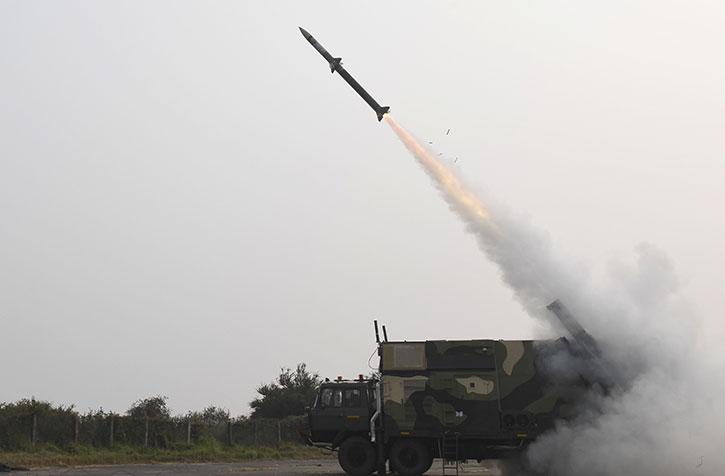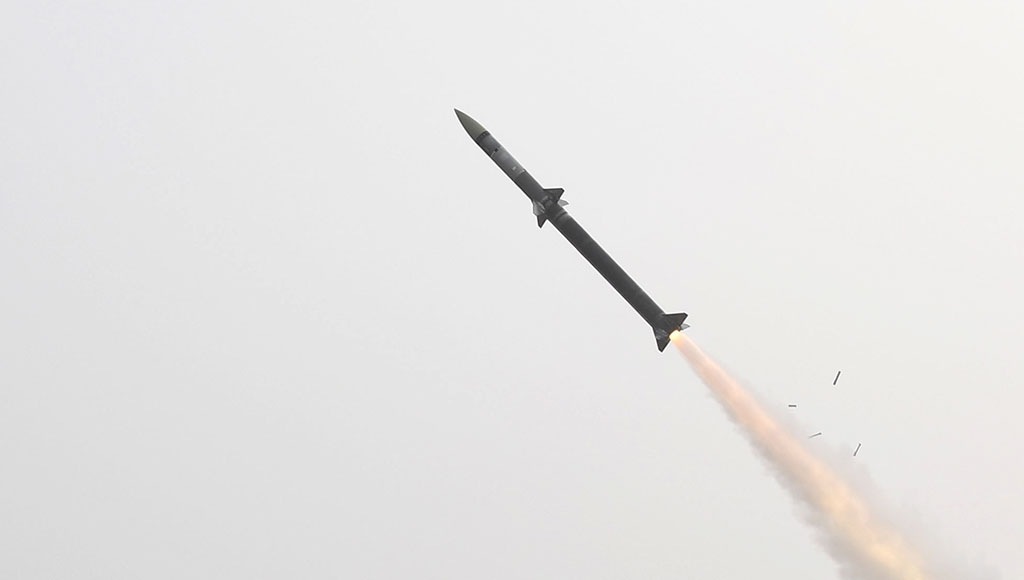DRDO conducted the successful maiden launch of Akash-NG (New Generation) Missile from Integrated Test Range off the coast of Odisha on January 25 2021. Akash-NG is a new generation Surface to Air Missile meant for use by the Indian Air Force to intercept high maneuvering low Radar Cross Section (RCS) aerial threats. According to the Indian defense ministry, the launch met all the test objectives by performing high maneuvers during the trajectory and an effective intercept at the terminal phase.
The baseline AKASH system has been in service with the Indian Air Force and Army since 2015, but hasn’t met user expectations due to the slow reaction time associated with the complex system. AKASH NG aims to improve the system’s performance, with the introduction of a more compact and agile missile, derived from an improved propulsion active RF seeker systems, and an associated AESA radar.
The official statement released by the Indian MOD indicates that the recent test validated all elements, including the Multi Function Radar (MFR) and Command and Control system’s performance, onboard avionics and aerodynamic configuration.
The Akash-NG uses a new guidance method that employs an Active Radar Seeker (ARSEEK) over the traditional Command Guidance, limiting engagements to Line Of Sight (LOS), and restricting the missile’s capabilities in mountainous terrain. ARSEEK has been tested on AKASH-1S and AKASH II variants in 2019. The active seeker enables the missile to guide itself to intercept the target, thus opening a much wider target engagement envelope. The N.G.’s propulsion consists of a new, dual-pulse rocket motor, following a principle used in the MRSAM. This system replaces the much heavier hybrid system used on the AKASH-1, consisting of four solid boosters and a ramjet. The new propulsion is lighter, more compact, and extends the missile’s range beyond 50 km, compared to the current 30 km.
Carried in sealed launcher-containers the new missile can deploy faster, offer a shorter reaction time. The MFR replaces three different radars associated with the current ground control center, thus improving the unit footprint and reaction time. The use of the modern radar and active seeker also improves the system’s immunity to enemy countermeasures.
In 2018 the Indian defense ministry approved the procurement of two regiments of Akash-1S medium-range surface-to-air missile system. A typical Akash regiment consists of 6 squadrons, 84 batteries, and 750 missiles.





















